|
Grandma's Herb Guide
|
Understanding herbal life can be as complicated as understanding life itself. Grandma's Herb Guide is herb information to understanding the 5 types of classifying herbs, aromatic, astringent, bitter, mucilaginous and nutritive.
Herb Type: AROMATIC
Active Constituent: volatile oil
Method of Identification: crush the herb and smell carefully, (not always pleasant), hot or spicy "pungent" taste.
Herb Type: ASTRINGENT
Active Constituent: tannins
Method of Identification: . astringent taste (often bitter as well). Differentiated from bitter herbs by their constipating effect upon ingestion.
Herb Type: BITTER
Active Constituent: laxative & diuretic, alkaloids & saponins
Method of Identification: bitter taste, often have laxative or diuretic effects when ingested.
Herb Type: MUCILAGINOUS
Active Constituent: polysaccharides
Method of Identification: sweet, slippery mouth feel, makes slippery solutions and often swell in water.
Herb Type: NUTRITIVE
Active Constituent: varies protein, fats, carbohydrates, vitamins and minerals
Method of Identification: mild, food stuffs, can be eaten in large quantities
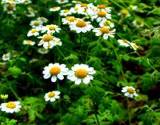 | 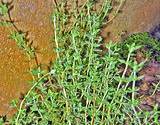 | 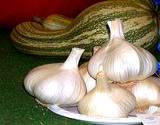 |
Aromatic Herb Guide
AROMATIC HERBS
These herbs owe their properties mainly to volatile oils. The oils are used therapeutically and as flavorings and perfumes.
The volatile oils vary widely chemically, providing the characteristic flavor, odor, analgesic, antiseptic and carminative effects of the herbs.
The aromatic herbs are divided into two subcategorize, the stimulant herbs and the nervine herbs.
Stimulant Herbs
The stimulant herbs most often effect the respiratory, digestive, and circulatory systems. They have a short shelf life since they are often the "soft" part of the plants. (i.e. flowers, leaves).
Examples of Stimulant Herbs include:
- capsicum
- damiana
- fennel
- garlic
- ginger
- peppermint
- sage
- thyme
- catnip
- feverfew
- lemon grass
- penny royal
Astringent Herb Guide
ASTRINGENT HERBS
These herbs owe their properties mainly to their tannins. Formerly tannins were used to produce ink and preserve animal pelts. Systematically, tannins have the ability to precipitate proteins and this "tightens" or tones living tissue. Since tannins are phenolic compounds combined with sugars, these herbs could be classified with the phenolic bitter herbs. However, the properties of astringents are opposite from the bitter laxatives and are classified separately.
Tannins are always found in the "hard" parts of plants (i.e. bark and roots), and sometimes in the leaves. The plant uses the tannin to protect it from parasite, insect and fungal attack.
Examples of Astringent Herbs are:
- bayberry
- comfrey
- eyebright
- golden seal
- pau d'arco
- peppermint
- red raspberry
- slippery elm
- white oak
- white willow
- yarrow
- black walnut
- crampbark
- mullein
- penny royal
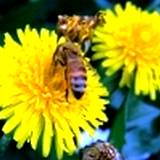 | 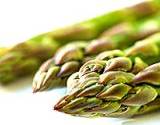 | 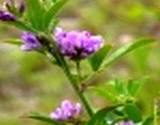 |
Bitter Herb Guide
BITTER HERBS
The term "bitter" is derived from the taste of these herbs and was originally limited to an herb's ability to stimulate the production of gastric secretions (i.e. gentain, a bitter tonic)
The bitter herbs are divided into four subcategorized, laxative herbs, diuretic herbs, saponin containing herbs and alkaloid containing herbs.
Laxative Herbs
These are three basic types of laxative. Bulk laxatives (see mucilaginous herbs), lubricant laxatives (mineral oil), and stimulant laxatives (anthraquinone type). The laxative herbs of the bitter category are the stimulating type. Purging the digestive tract of toxins is one of the oldest and most common forms of self-medication. These herbs effect only the digestive system and are taken in capsules or as extracts before bed with the purge occurring six to eight hours later.
Examples of Laxative Herbs are:
- aloe
- cascara
- pumpkin
- licorice
- senna
- yellow dock
- yucca
- barberry
- gentian
- safflowers
- golden seal
Diuretic Herbs
Diuretic are herbs that induce losses of fluid from the body through the urinary tract. The fluids released through the urine eliminate toxins and excess liquid. This is a popular way to cleanse the vascular system and some internal organs such as the kidneys and liver. Herbal diuretics exert an irritant action caused by flavonoids.
Flavonoids were discovered long ago for their yellow or orange color and used as dyes. Their therapeutic action was discovered in the early 1900s. They are known to strengthen the capillaries and act as diuretics. They often accompanied by the water soluble vitamins, especially vitamin C.
Examples of Diuretic Herbs are:
- asparagus
- blessed thistle
- burdock
- butcher's broom
- buchu
- chaparral
- chickweed
- cornsilk
- dandelion
- dog grass
- grapevine
- hawthorn
- horsetail
- ho shou wu
- hydrangea
- juniper berries
- milk thistle
- nettle
- parsley
- peach bark
- uva ursi
Saponin containing herbs
Plants containing saponins have long been characterized for their ability to produce frothing acqueous solutions. The name "saponin" is derived from the Latin "sapo" meaning soap.
The detergent properties of saponins result in the emulsification of fat soluble molecules in the digestive tract. They effectively "dissolve" the cell walls or red blood cells and disrupt them. When taken orally, however, they are comparatively harmless or they are not absorbed at all. For example, saponin rich herbs like yucca and sarsaparilla give the foamy properties to root beer.
Saponins owe their emulsifying properties to the chemicals where either a steroid or triterpene fat soluble base molecule is joined to a water soluble sugar molecule.
Saponins' most important property is to accelerate the body's ability to absorb other active compounds.
Examples of Saponin Herbs are:
- wild yam root
- schizandra
- blue cohosh
- devel's claw
- licorice
- alfalfa
- black cohosh
- yucca
- ginseng
- gotu kola
Alkaloid containing herbs
An alkaloid was formerly thought of as a bitter alkaline compound (neutralizing acid) hence the term, alkaloid. The central nervous system active drugs from the opium poppy and the coca leaf are some of the most noted alkaloids.
Examples of Alkaloid containing herbs are:
- ephedra
- golden seal
- lobelia
- pau d'arco
- valerian
- capsicum
Mucilaginous Herb Guide
MUCILAGINOUS HERBS
Mucilaginous herbs derive their properties from the polysaccharides they contain. All plants produce mucilage in some form to store water as hydrates and as a food reserve. Most mucilages are not broken down by the human digestive system but absorb toxins from the bowel and give bulk to the stool. Mucilaginous herbs are most effective topically as poultices and knitting agents, and topically in the digestive tract. If used as a lozenge or extract, they have demulcent action effecting on the throat.
The major effects of mucilaginous herbs are:
1. lower bowel transit time. 2. absorb toxins. 3. regulates intestinal flora. 4. demulcent / vulnerary action.
Examples of Mucilaginous Herbs are:
- althea
- aloe
- burdock
- comfrey
- dandelion
- echinacea
- fenugreek
- kelp
- psyllium
- slippery elm
- dulse
- glucomannan from Konjak root
- Irish moss
- mullein
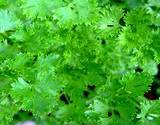 | 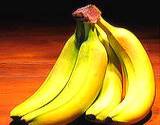 | 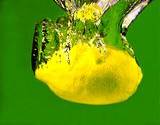 |
Nutritive Herb Guide
NUTRITIVE HERBS
These herbs owe their name and classification to the nutritive value they provide to the diet. They are true foods and exert some mild medicinal effects such as fiber, mucilage and diuretic action. Most importantly, they provide the protein, carbohydrates and fats, along with the vitamins and minerals necessary for good nutrition.
Examples of Nutritive Herbs are:
- rosehips
- acerola
- apple asparagus
- banana
- barley grass
- bee pollen
- bilberry
- broccoli
- cabbage
- carrot
- cauliflower
- grapefruit
- hibiscus
- lemon
- oatstraw
- onion
- orange
- papaya
- pineapple
- red clover
- spirulina
- stevia
- wheat germ





